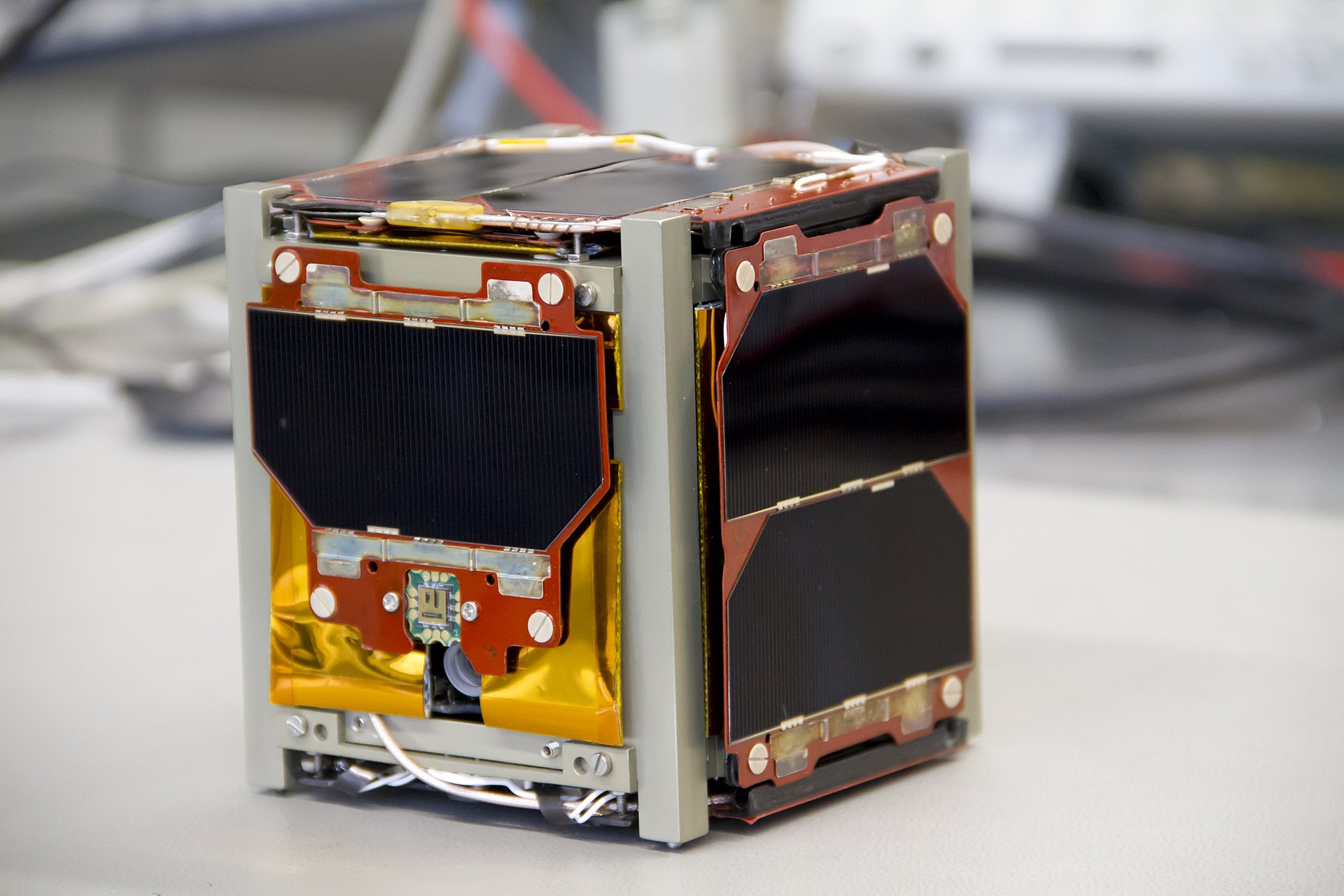"Semi-stowaways"
TUM students develop a satellite to be launched into space

TUMstudinews: The First-MOVE is cubical with a side length of 10 cm and weighs one kg. What is this small construction able to do?
Claas Olthoff: Our satellite can do almost everything a "large" satellite can do. It has a small computer, a radio and a power system with solar cells and batteries. Four of the solar cells are to be measured in space. And as we had a bit of spare room, we also installed a camera. The scientific value is secondary – it's just fantastic for us to visually accompany and document the whole thing.
TUMstudinews: In October 2012, the first-MOVE will be launched into space. It took six years to develop. You were involved from the very start.
Claas Olthoff: In 2005, I went to the TUM to study aerospace technology. Altogether, there have been about 80 students working on the cube since 2006. Most of them were students of engineering, but there were several physicists and computer scientists as well. At first, the journey was planned with a rocket from India – but it was postponed a number of times. Now it's definitely going to take place!
TUMstudinews: The final tests before the launch are now in progress. What kind of tests does a small satellite like this have to pass?
Claas Olthoff: It is important to check the natural frequency of the cube. It is placed on a vibrating table, a "Shaker“, which simulates the rocket launch. The shaker-test was carried out at the IABG in Ottobrunn, with success! We have also successfully completed the thermal vacuum test. The satellite orbits the earth and is therefore exposed to the sun for 60 minutes and in the shade for 30 minutes. The difference between hot and cold is enormous. The cube must be able to resist this.
TUMstudinews: Can the material of the cube resist such strains?
Claas Olthoff: The final test is the so-called acceptance test – which is required by the launch operator. The tests are extremely demanding on the hardware, which is why traditionally two fully functional cubes are developed: a qualification model to go through the hard tests and a flight model that will actually be sent into space later on.
TUMstudinews: When will the First-MOVE that was constructed by TUM students be sent into space?
Claas Olthoff: Our cube with be launched with a Russian Dnepr rocket around mid to late October. The main payload is DubaiSat2 satellite that weighs 300 kg. Since the missile can carry a payload of up to 3.7 tons, there is still quite some room left for several other satellites to be launched. So we are a so-called "secondary payload". We are semi-stowaways.
TUMstudinews: Finally – and after years of development – it is going to happen. Are you nervous about the start?
Claas Olthoff: The last few weeks have been extremely stressful. We didn't sleep much, worked through weekends and drank gallons of coffee. I think we are all a bit too tired to get really excited at the moment. In autumn though, when we'll be sitting in our control room chairs waiting for the satellite to fly over Garching for the first time, we'll certainly all be extremely excited.
Claas Olthoff (28), is a doctoral candidate at the Institute of Astronautics (LRT) with Prof. Ulrich Walter. He is from Kaiserslautern and studied aerospace technology at the TUM. As a student he worked on the first-MOVE project and is now supervisor of the project team.